
Nature Profile - Episode 2 and 3
2021, experimentalfilm, 15 min
After producing the first part of the series "Nature Profile," the film crew decided to stay on the island and expand the Nature Profile series with two more episodes. However, not everything went as planned. The animals seemed to disappear without a trace, and over time, the team became bored. Despite a certain lack of motivation, the plan was implemented. However, the need for a third film was not seen. So here we have the special feature Episode 2 and 3, compressed, to see in one film.
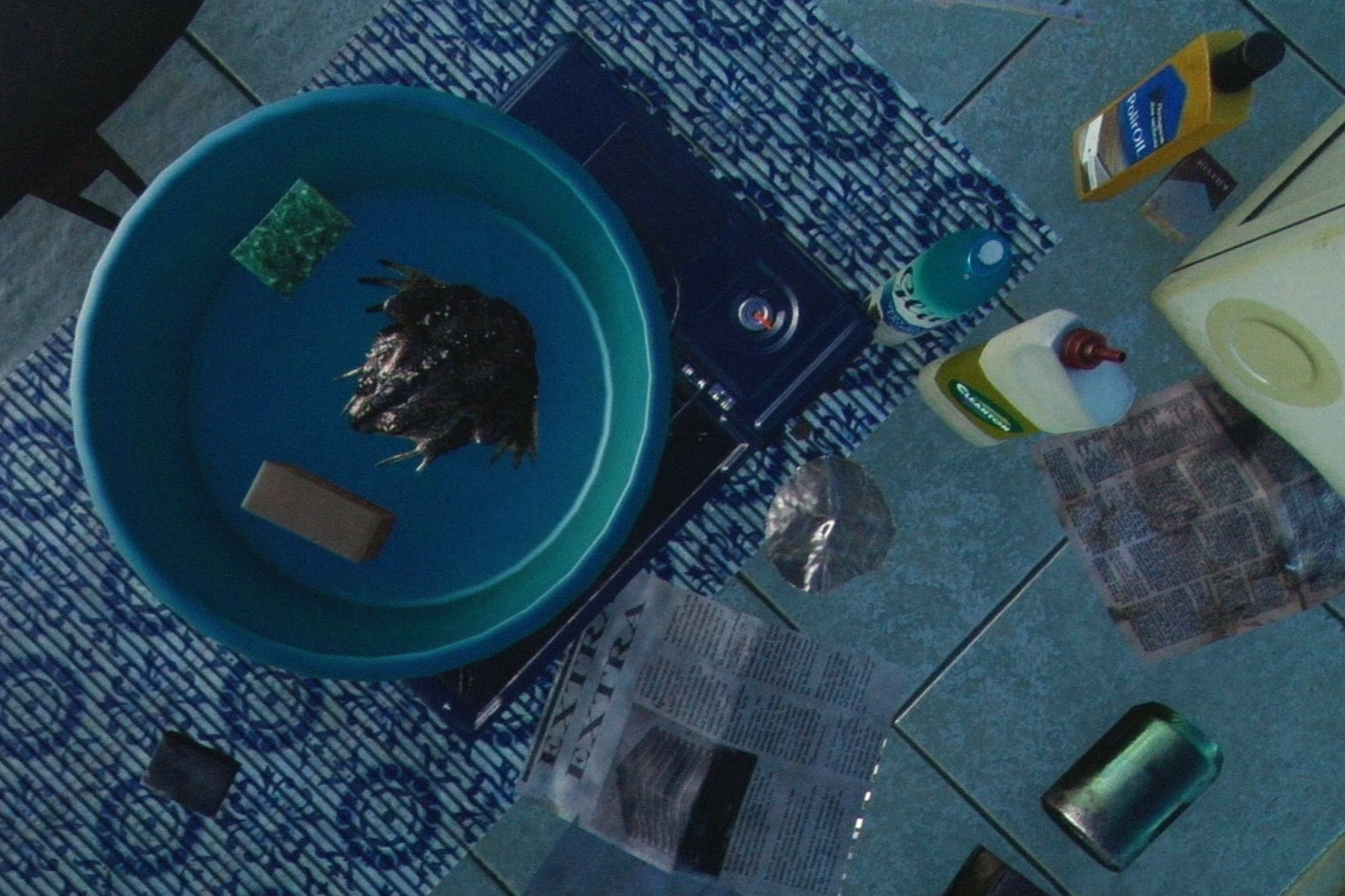
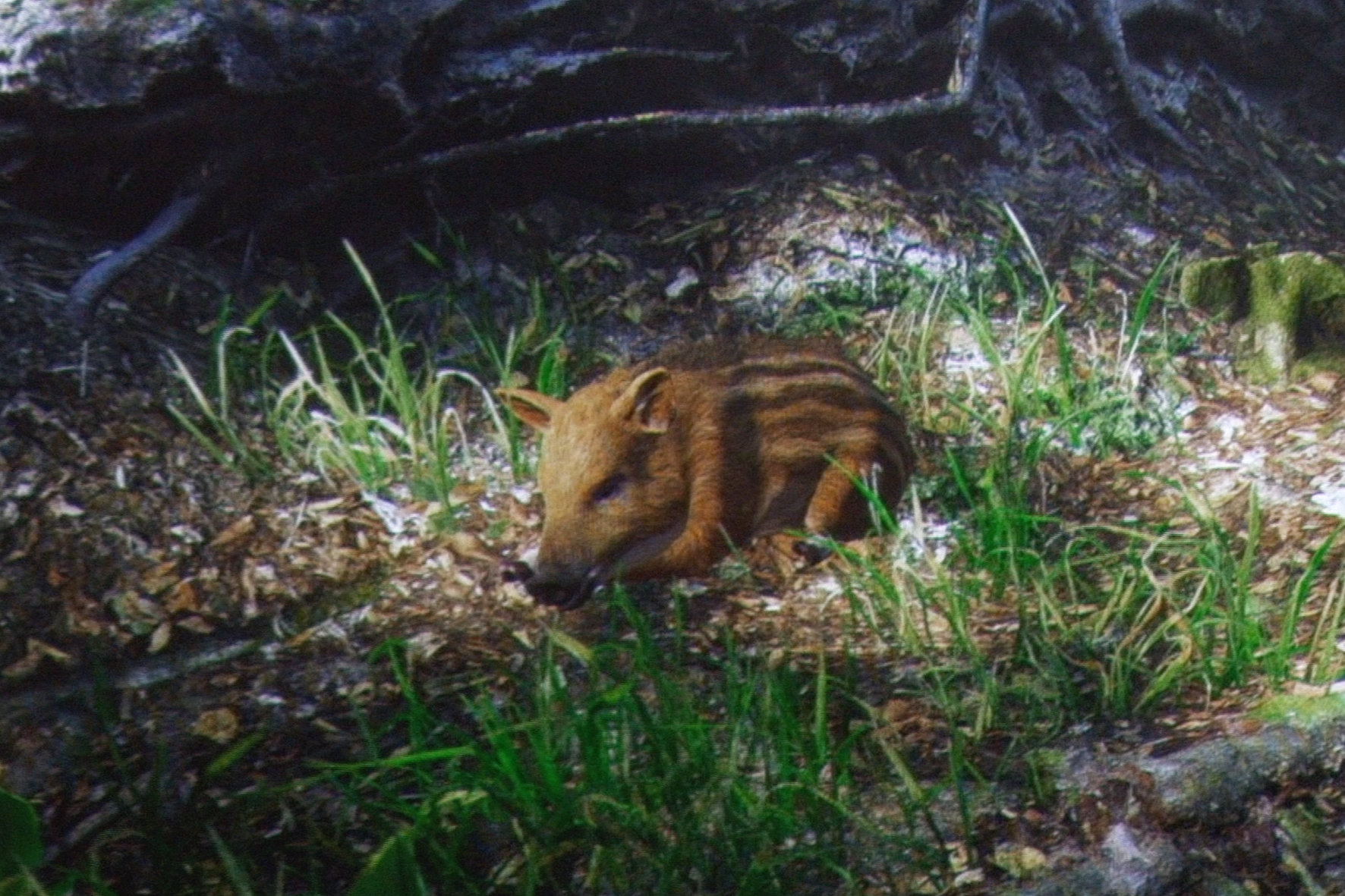
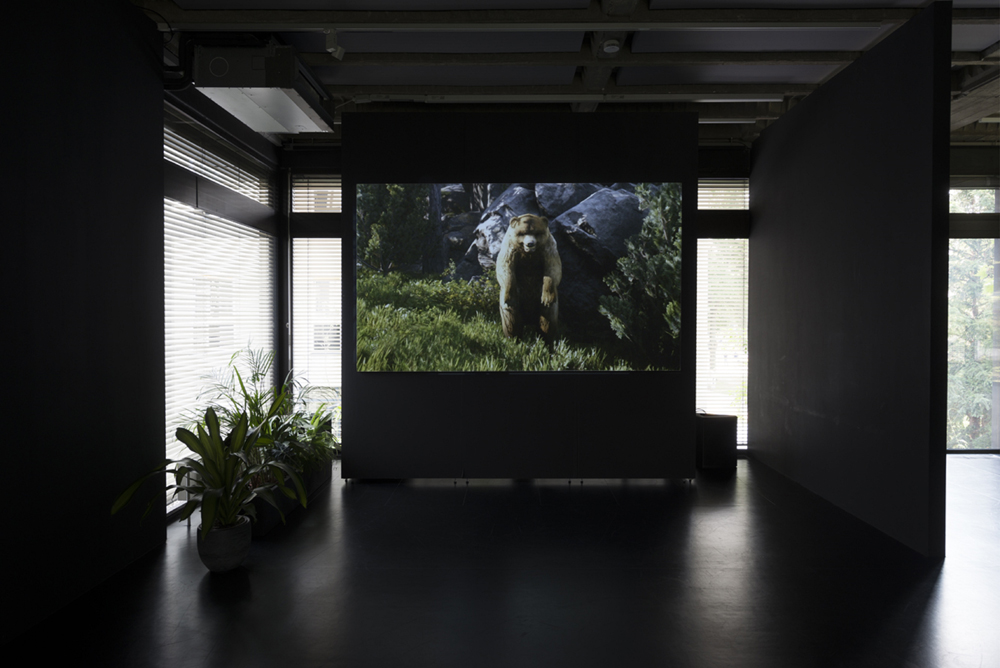
Nature Profile - Episode 1 - The tawny Owl
2019, experimental film, 9:41 min
In the first episode of the series "Characteristics of Nature" Radan produces a kind of educational video, which explains to us the tawny owl and its habitat, but also the cultural significance of the bird as a "bird of death". Although stylistically close to conventional nature films, the video tilts into a seemingly surreal sequence in which the focus on the studied species is repeatedly distracted by elements that are clearly not part of the image. The continuously digitally produced video is on the one hand "documentary" constructed - in its artistic structure, however, strangely idiosyncratic. It moves closer to the unpredictable dynamics of nature than it may seem superficially.



You Said: "Sacrifices Must Be Made"
Porzellan, glaced, 35x27x11cm
Radan also works with modifications of body languages that, depending on the context, run empty and change their meanings. In a series of porcelain figures, this aspect of his work is shown for the first time from a momentary standstill.
The combination of roughly modeled silhouettes and fragile shimmering material makes the statuettes appear from a single cast and at the same time like mysterious excavations from archaic times.
The models are based on photogrammetry of avatars, which were recorded in the computer game Counter Strike, after following them as an invisible observer for a long time until the bodys collapses to the ground by fatal shots.
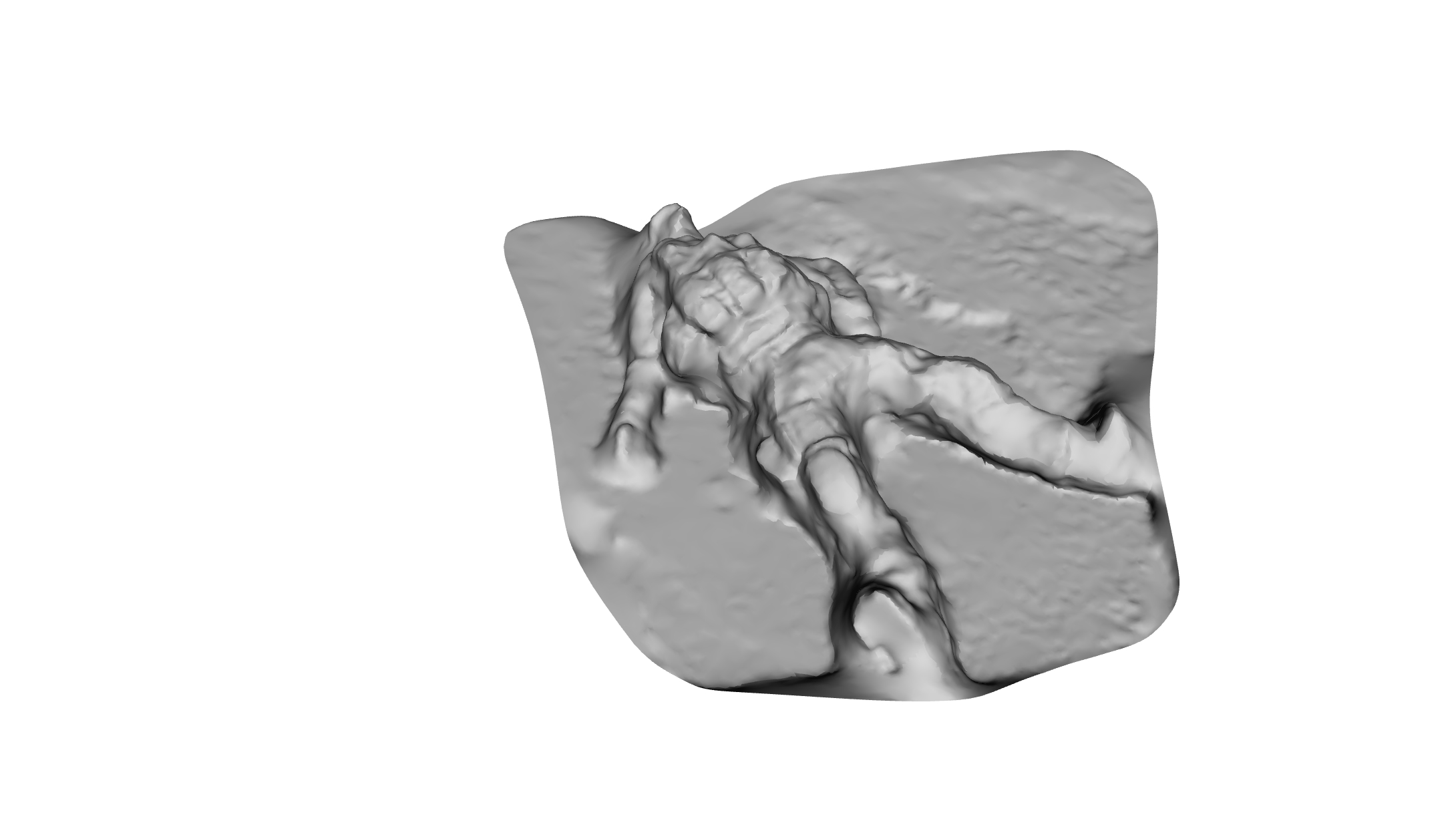
In their new plastic form, the slumped bodies elude a clear assignment to digital contexts and first-person shooter games. They are reminiscent of depictions of wounded warriors and abstract acts, of studies of everyday actions or even a Pietà. Their shapeless contours reflect a brief moment of virtual vulnerability - before the player in question can "respawn" his avatar and the game continues.
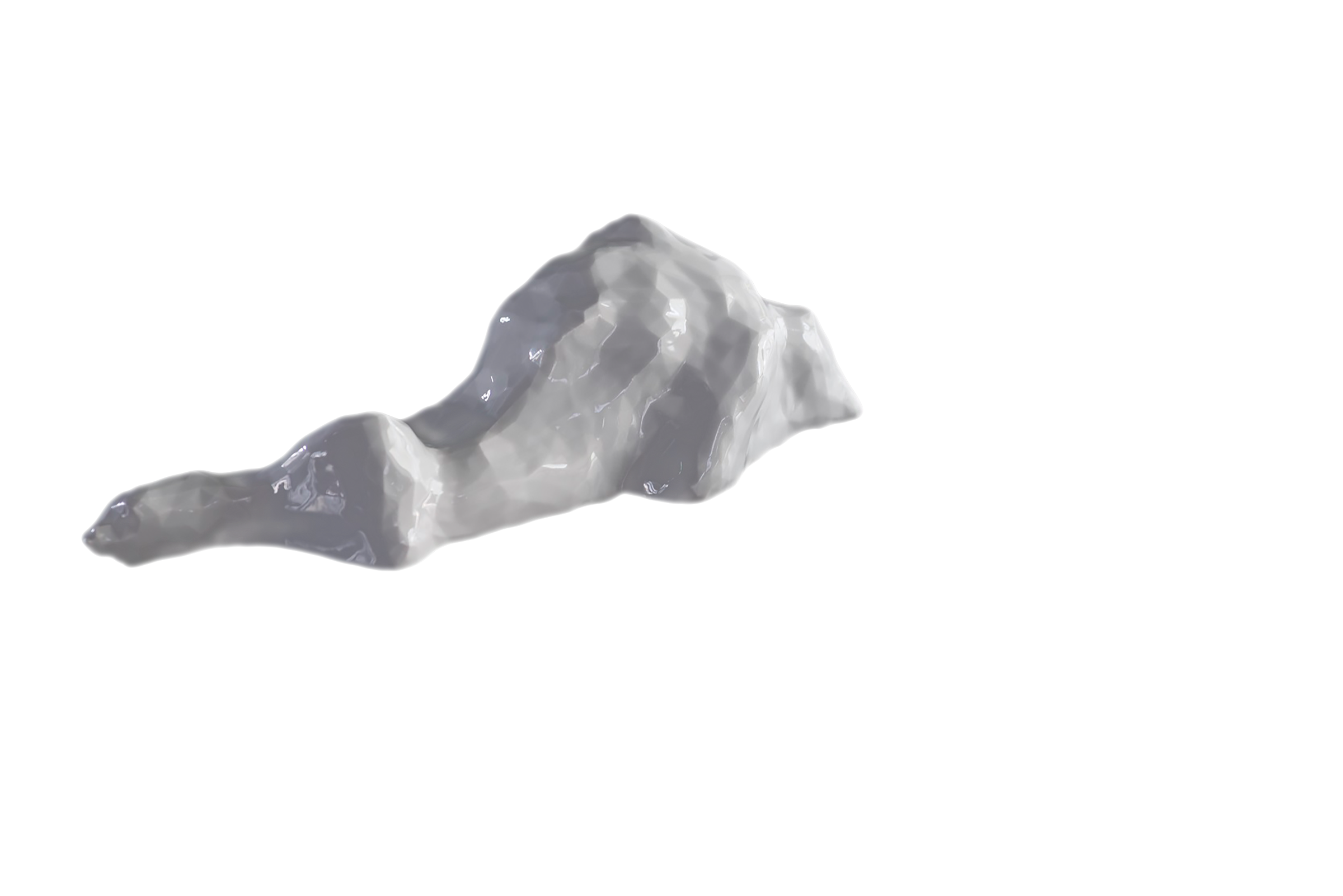
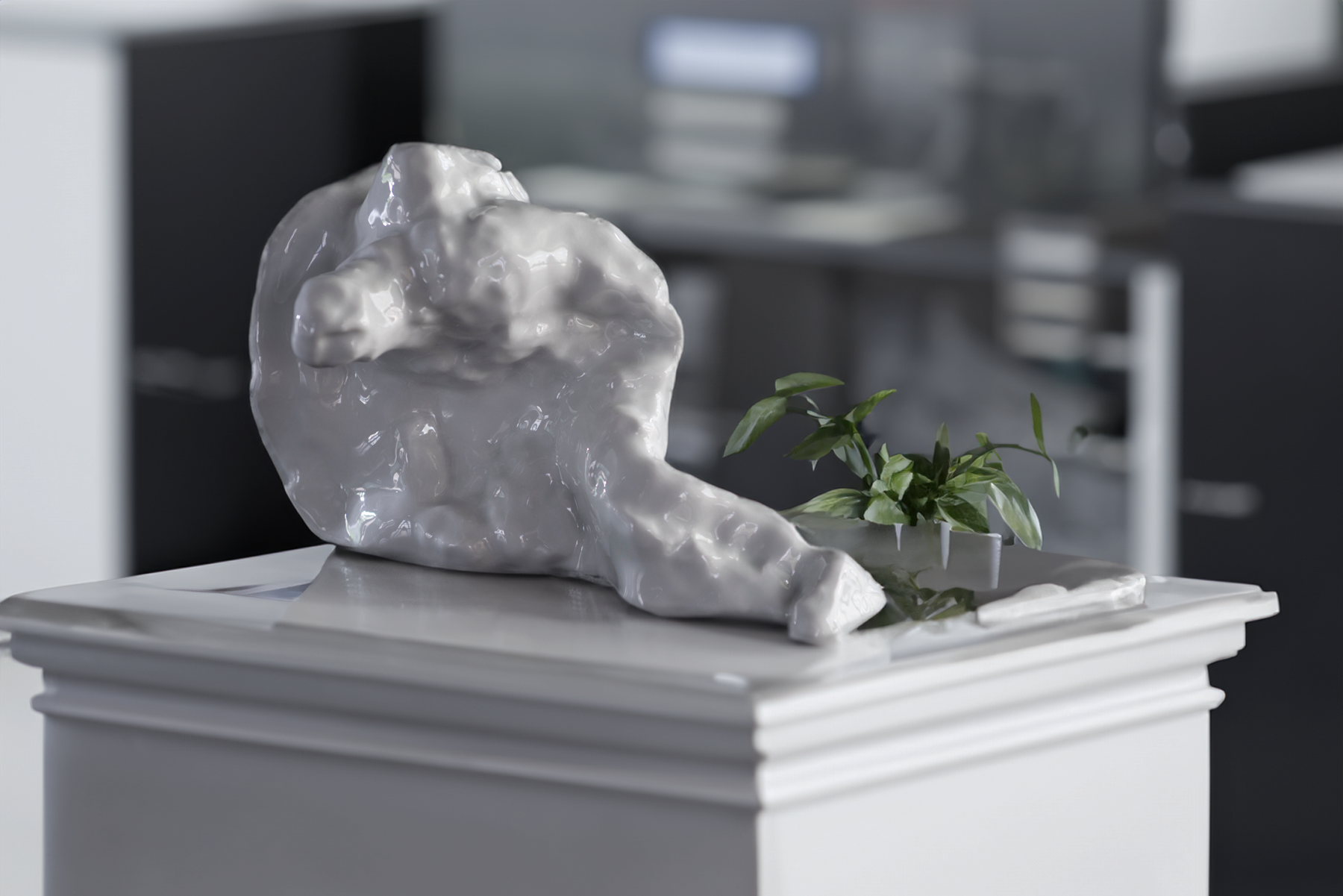

This water gives back no Images
2017, 3-Kanal-Videoinstallation, 6:12 min, loop
A tropical landscape turns out to be the distorted world of a human avatar. In Aleksandar Radan's film "This Water Gives Back No Images," nothing is as it seems yet eerily real.
At just 18 years old, William Waring Cuney, then a student at Lincoln University in Pennsylvania, wrote "No Images." Two years later, the poem won a prize at the "Literary Contest" of the Opportunity Magazine and eventually became a classic of the Harlem Renaissance, a social, artistic, and cultural movement of African-American artists in the 1920s.

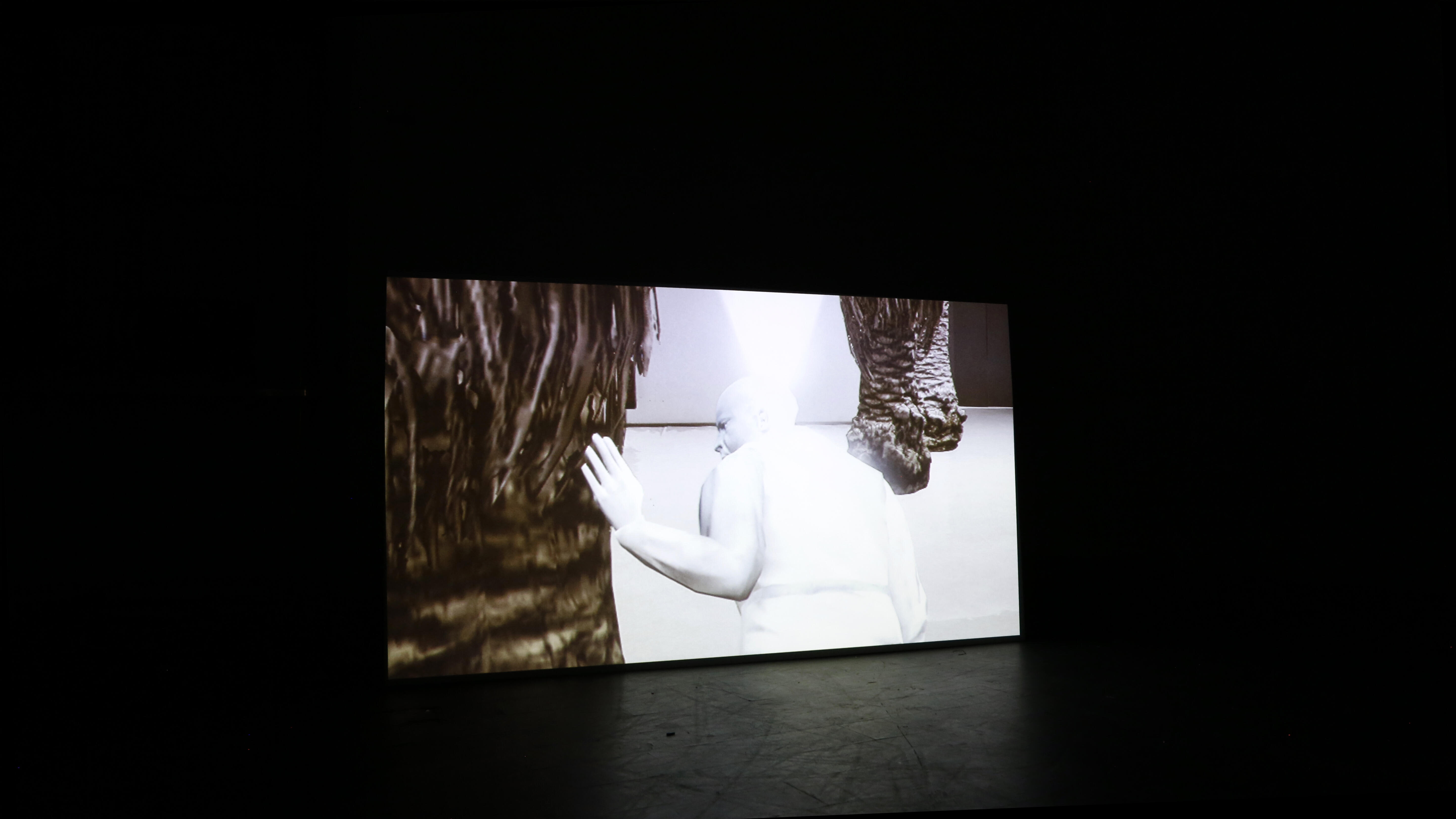
On her 1966 album "Let It All Out," Nina Simone released a recording of the a cappella version of the poem titled "Images," which she had performed two years earlier in New York. In just a few lines, Cuney had captured the racial and class issues that Simone, amidst the Civil Rights Movement, revisited: "She does not know her beauty / She thinks her brown body has no glory. If she could dance naked under palm trees / And see her image in the river she would know. […] But dishwater gives back no image."
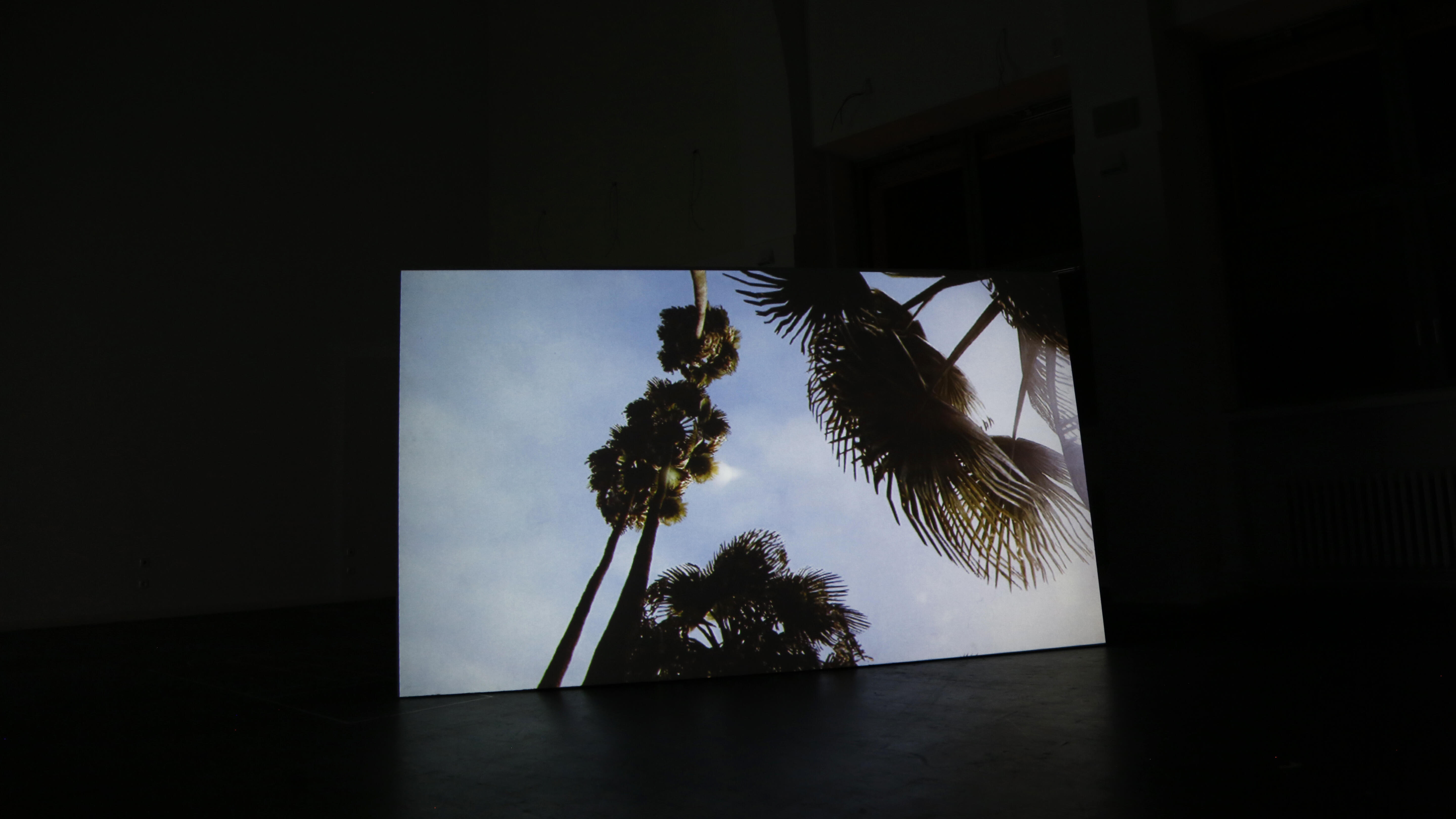
The live recording by Nina Simone appears amidst Aleksandar Radan's work - which already in the title refers to the poem - "This water gives back no images." The six-minute video loop opens with shots of a tropical landscape. Initially, one might think that the palm landscape shown is low-resolution camcorder footage, but it soon becomes clear that the footage is of digital origin.
And indeed: Aleksandar Radan modified landscapes and figures from the well-known video game "Grand Theft Auto V" for "This water gives back no images" (2017) - a technique he has already used in other works. On the soundtrack, where cheerful bird song was just heard, there are suddenly digital distortions that also seem to affect the image. Inside a dark building, a pale-looking figure, an avatar, now appears motionless sitting on a couch, then lying on the floor, and finally, sitting in front of a TV set again among the palms.
THE AVATAR SUDDENLY FINDS ITSELF IN A FLOODED PALM LANDSCAPE AGAIN
In this, now the live recording of Nina Simone's "Images" is seen, her impressive voice echoing strangely through the digital world, again there are image and sound distortions until the avatar suddenly finds itself in a flooded beach landscape, from which only the crowns of the palms protrude. "This water gives back no images," as an installation projected on three screens with a time lag, plays with the striking differences between surface and actual core.
A phonetic similarity turns "Dishwater" into "This Water" in Radan's work. A supposedly naturalistic palm scene turns out to be a digital landscape that can be modified as desired. Televisions float through the air, water swallows reflections of figures, palms grow from seawater - or were they swallowed by large amounts of water? The fact that the "digital water" in Aleksandar Radan's work does not reflect any images is not entirely correct: the mirrored image in the digital world only reflects exactly what its creator wants it to reflect - because chance or even physical laws do not play a role here, unless they are intended by the game programmer himself.
While Cuney in "No Images" refers to racist as well as socio-economic discrimination structures within society with the topos of the mirror image - society itself is the mirror and distorts the image of the individual - the question of what can even be held up as a mirror to the individual in digital worlds remains open for the time being.
Text: Daniel Urban, SCHIRN KUNSTHALLE FRANKFURT
Prophecy of an ridiculous avatar
2017, experimental film, 5:20min
This short rotoscoped film uses images from virtual reality, found on platforms like YouTube or when playing computer games. Picture by picture, individual sequences are “traced” and thereby transformed into delicate yet dynamic line drawings. The suggestions of violence and pornography, self-staging and voyeurism, which are ubiquitous on video portals or image boards, in computer games and on social media, seem diluted but paradoxically concentrated at the same time. Dislocated from their online context, these drawings, which span the playful to the brutal, literally define and lend focus to episodes, observations and patterns of behavior that have been put on display. In this manner, they are more open to interpretation, but also more unsettling.
The isolated gestures, disassociated from their facial expressions, are set to sounds that range from muffled to violent—as if the tones originated from the deepest “subconscious” of online unreality. Offensive self-staging on social networks and images of aggression, as they circulate on certain sites or involuntarily land online, encounter and merge with one another. In the process, they suggest that the staging of violence and the violence of (self-)staging in the fight for attention perhaps have more to do with one another than we would like to accept in our everyday lives online.

In between Identities
2015, experimental film, 8:50min
Just a moment ago we were floating above the city, but in the next moment we find ourselves on the edge of a flat roof, plunging between concrete walls. Free fall, yet the impact is absent. We glide through urban landscapes, effortlessly crossing boundaries between the public and private, encountering bodies that seem as optimized as the hyper-commercialized environments we follow them through.

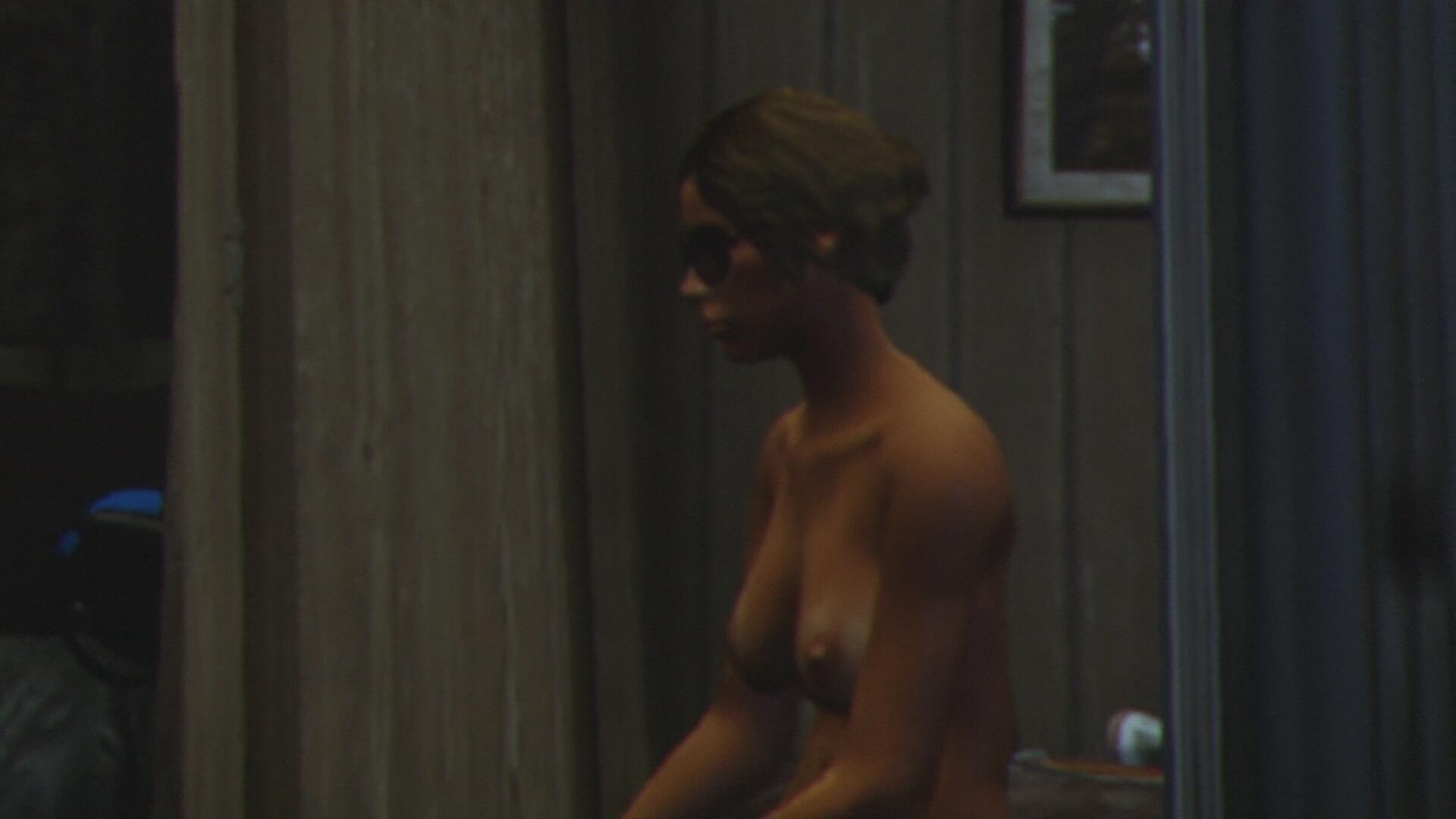
Characters united only by the desire to be seen. Their gaze seems constantly directed at themselves. They belong to the surface of a video game, which here not only serves as found footage but becomes the film set. In this set, the filmmaker presents his characters with exhaustive choreographies of bored gestures and everyday actions, which in their longing for visibility remain without consequences and repeatedly end up in emptiness.


With one hand on the joystick and the other holding a video camera, the filmmaker tries to reach his digital performers, to get close to their disembodied surfaces and thus to overcome the limits of the game. He challenges them to abnormal behaviors, pushes them to acts of transgression and exposes himself to failure together with them. In these conflicting moments of control and loss of control, the digital characters become complex and reveal humanity.
A driving, delightfully amoral commentary on the self-discovery performances not only of our seemingly perfect digital reflections.
Jury statement, Open Frame Award 2017, Text: Alex Gerbaulet
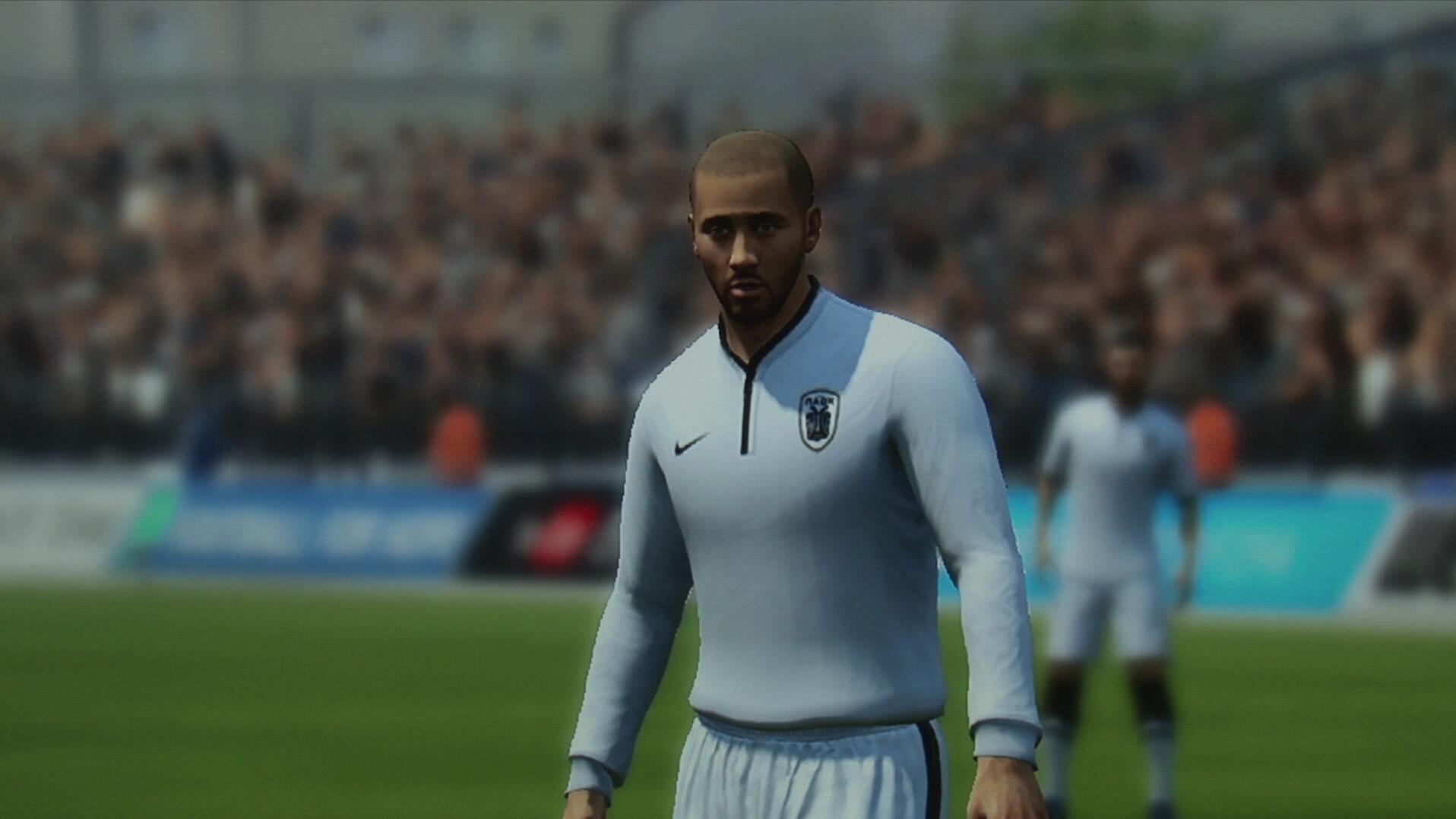
Whatever you do
2015, Musikclip, 3min
„Auch die Menschen sondern Unmenschliches ab. In gewissen hellsichtigen Stunden lässt das mechanische Aussehen ihrer Gesten, ihre sinnlose Pantomime alles um sie herum stumpfsinnig erscheinen. Ein Mensch spricht hinter einer Glaswand ins Telefon; man hört ihn nicht, man sieht nur sein sinnloses Mienenspiel: man fragt sich, warum er lebt.
Auch dieses Unbehagen vor der Unmenschlichkeit des Menschen selbst, dieser unberechenbare Sturz vor dem Bilde dessen, was wir sind, dieser Ekel, wie ein Autor unserer Tage es nennt, ist das Absurde.
Und auch der Fremde, der uns in gewissen Augenblicken in einem Spiegel begegnet, der vertraute und doch beunruhigende Bruder, den wir auf unseren Fotografen wiederfinden, ist das Absurde.“
Albert Camus „Der Mythos des Sisyphos“ (1942)
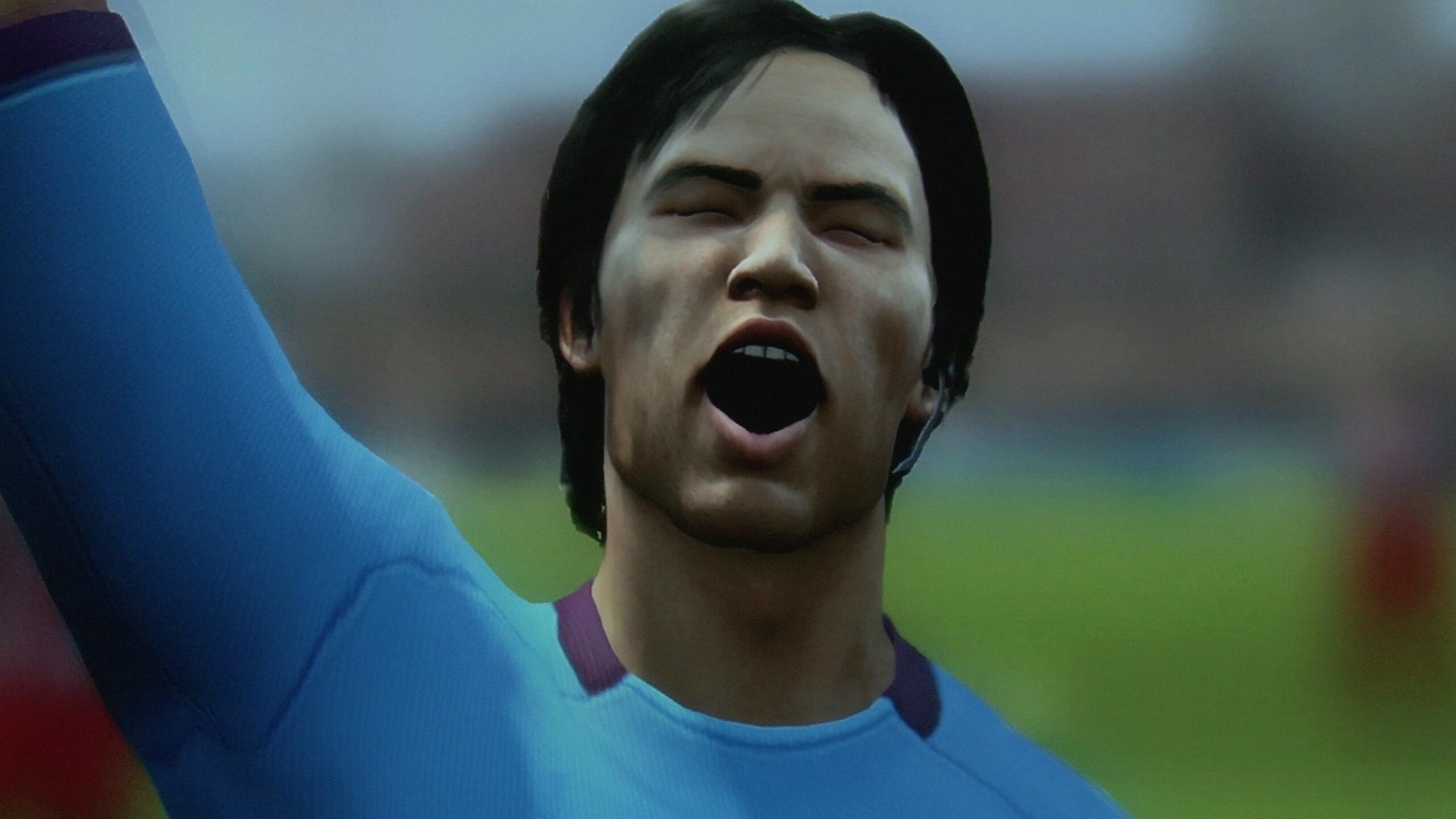
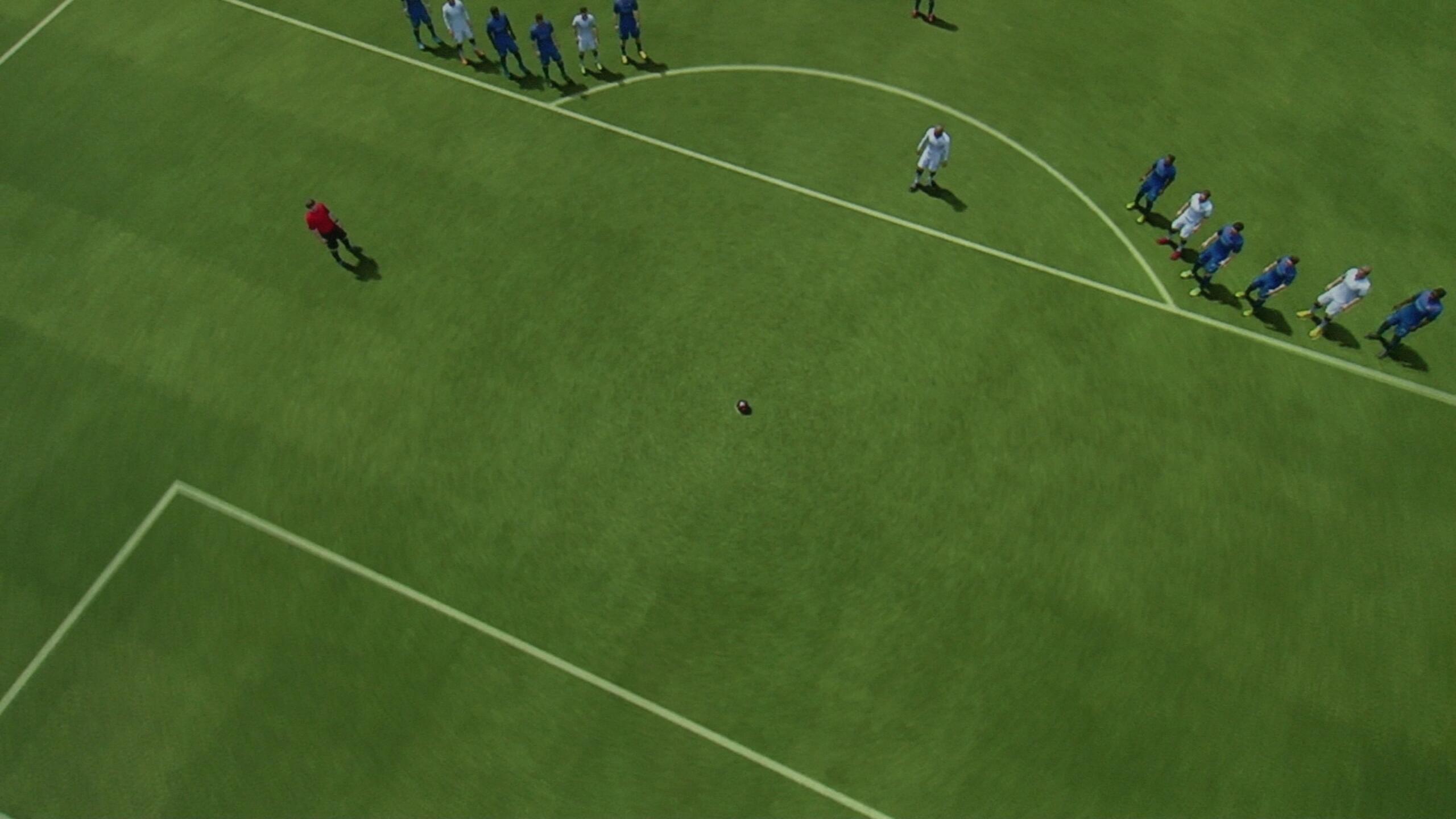
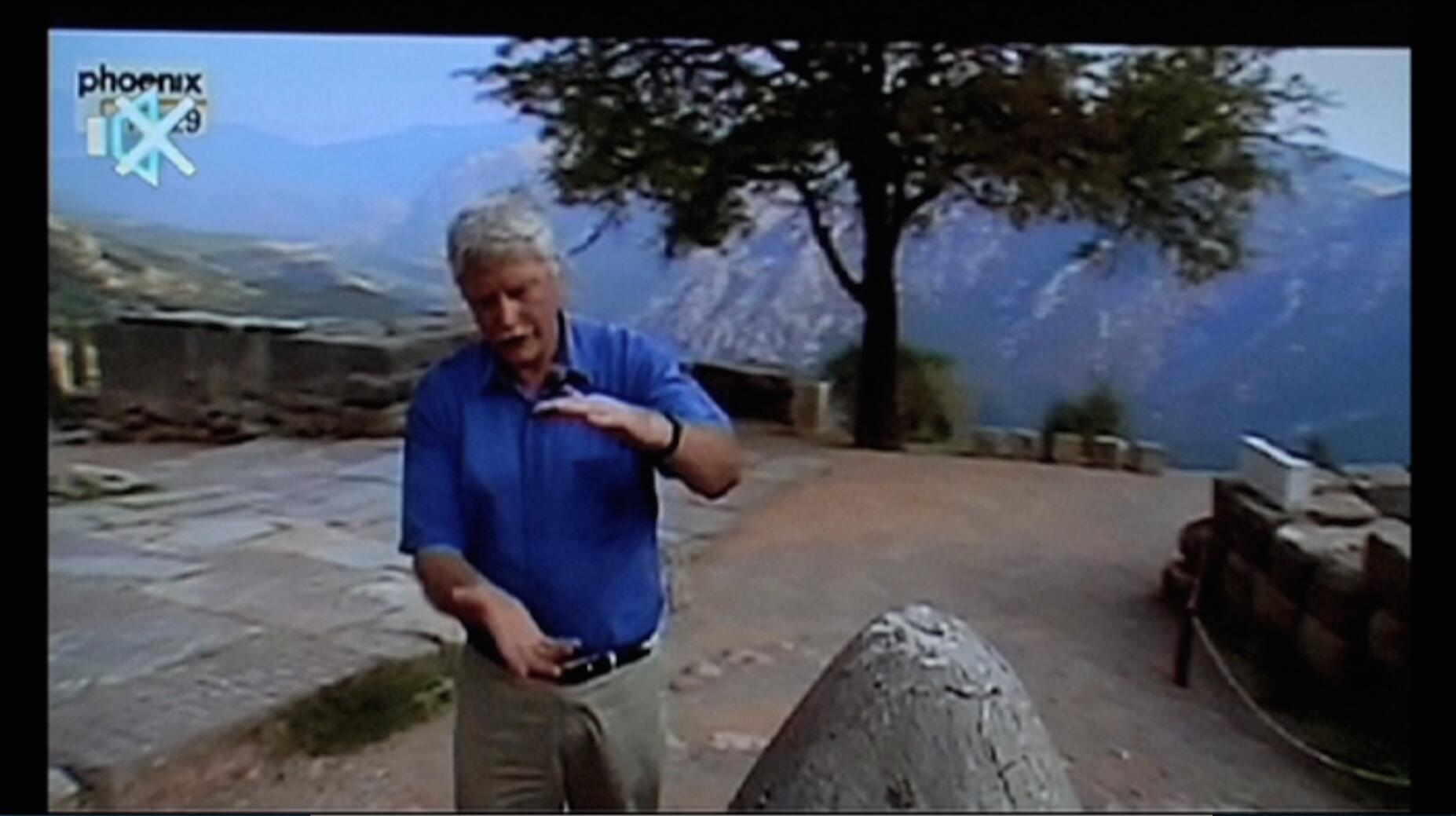
Met my wife
2012, experimental film, 3min
Prof. Dr. Jelle de Boer is a geologist who met his wife as she was leaning against a rock face in the hot sun, and she was stunning. Before an impressive landscape, de Boer uses the words that Radan puts into his mouth to tell this plausible story, and also how it could have unfolded very differently.
For Frau kennengelernt, Radan placed a camera before a television, muted the sound on the geology documentary that was playing and “synchronized” it with the scientist’s lecture. As he improvises his own narration of the images, Radan is repeatedly audibly surprised by unexpected gestures and cuts. The result is a surprisingly synchronous story of a felicitous first meeting that lies somewhere between romance, poetry, and absurdity.


As an early video experiment, Frau kennengelernt already addresses several themes central to Aleksandar Radan’s work: his fascination with the live moment, which the artist then compels to react spontaneously, as well as the precise observation of body language, the meaning of which changes according to context, and which runs dry, but can always be refilled with the unexpected.
Aleksandar Radan was born in Offenbach am Main in 1988 and studied at the local Hochschule für Gestaltung. His works revolve around the digital medium and the fact that we are constantly lagging behind it, but also on how we can independently continue known, perhaps stereotypical narrative threads. The aspect of "lagging behind" can be understood metaphorically but also finds visible concrete expression in the artist's interest in the body language of humans shaped by technologies and mass media communication formats or our avatars and representations in virtual environments. In Radan's works, one often encounters the stereotypical, pre-programmed gestures of digital avatars that fluctuate between lifelikeness and the artificially clumsy. These are manipulated in game moddings and supplemented with an improvisational moment: the films are mostly played live in computer game environments, which the artist has previously deliberately changed or designed as his "stage set". By interfering with the software's databases, game modding allows rewriting of, for example, the visual surface textures or the sound of a game, which thus becomes artistically formable material.
In Radan's experimental short films, the programmed meets the improvised, the preset is confronted with the spontaneous actions of the artist - who is also the player - in the virtual environment. The confrontation with media-shaped identities, constantly changing due to personal experiences, the "pre-sets" from which these are composed, and the performative frameworks in which interpretation and recognition can take place, also finds its way into non-purely digital works.
Haptic surfaces in completely different textures, such as textiles or porcelain, serve to materialize, in part autofictional, narratives, starting from notes in school notebooks and diaries, snapshots from popular media, or everyday events. The fascination with ambiguous textures is also clearly evident here: tangible before the eyes and yet shimmering as projection surfaces for associations that make the contours of seemingly familiar (media) worlds ambiguous. Aleksandar Radan received the Hessenfilm Author's Scholarship in 2022. His works have already been shown, among others, at the Festival International du Court Métrage in Clermont-Ferrand, the International Short Film Days in Oberhausen, and the Schirn Kunsthalle in Frankfurt.
CONTACT
Exhibitions/Screenings (Selection):
2023
- ARTE Kurzschluss „Steckbrief Natur - Folge 1, 2 und 3“ (DE, FRA)
- „Video games as a medium for artistic expression“ Lecture at IULM University Milano (ITA)
- „Video games as a medium for artistic expression“ Lecture im Kino des Filmhauses Bielefeld
- „Mother“ for Phoebe Philo Launch (Worldwide)
2022
- KFFK / Kurzfilmfestival Köln
2021
- ARTE Kurzschluss „Steckbrief Natur - Folge 1 Der Waldkauz“ (DE, FRA)
- Digitale, Düsseldorf
2020
- Internationale Kurzfilmtage Winterthur (CHE)
- Kurzfilm Festival Hamburg
- VIENNA SHORTS, Internationales Kurzfilmfestival, Wien (AT)
- Internationale Kurzfilmwoche, Regensburg
- Filmfest Dresden – Internationales Kurzfilmfestival
- OSTRALE at Rijeka 2020 (HRV)
2019
- DOUBLE FEATURE Schirn Kunsthalle, Frankfurt
- „Imitating while looking for a way out“ saasfee*Pavillon, Frankfurt
- "Back then by tomorrow", Werthalle Köln
- BIII Biennal of the Moving Image, Frankfurt
- KFFK / Kurzfilmfestival Köln
- Weekly: Film and Science, Poznan (PL)
- OSTRALE Biennale, Dresden
- Short Waves Festival, Poznan (PL)
2018
- European Media Art Festival, Osnabrück
- interfilm Festival, Berlin
- Molodist Festival, Kiew (UKR)
- Lago Film Fest (ITA)
- Open Eyes Filmfest, Marburg
2017
- „Things I Think I Want“, Frankfurter Kunstverein
- goEast-Festival Open Frame Award, Wiesbaden
- Goethe Media Space, Toronto (CAN)
- "Videorama“ Werkleitz, Halle
- Waterpieces Art Festival, Riga (LVA)
- Kunstfestival der Universität Guanajuato (MEX)
- Culture and Arts Project NOASS, Riga (LVA)
- Kriterion Art House Cinema, Sarajevo (HRV)
- „Hessen Choreographies“ Hessische Theatertage, Darmstadt
2016
- International Short Film Festival, Oberhausen
- Clermont-Ferrand Festival du Court Métrage (FRA)
- Tabakalera, San Sebastian (ESP)
- Lichter Filmfest international, Frankfurt am Main
- Festival premiers plans D‘Angers (FRA)
- Film Festival Cologne, Köln
- Concorto Film Festival (ITA)
- KFFK / Kurzfilmfestival, Köln
- Animatou Festival international, Genf (CHE)
- European Media Art Festival, Osnabrück
- Festival der jungen Talente, Frankfurter Kunstverein
2015
- Dokumentar und Video Fest, Kassel
- Filmfestival Casablanca (MAR)
- Lichter Filmfest International, Frankfurt am Main
2014
- Dokumentar und Video Fest, Kassel
2012
- Lichter Filmfest International, Frankfurt am Main
- "Fenster zur Straße" Werkleitz, Halle
- Fulldome Festival, Jena
- Fulldome UK, Leicester (GBR)
- BIII Biennale des bewegten Bildes, Frankfurt am Main
Awards:
- 2022 Autor*innen Stipendium HessenFilm und Medien
- 2022 Förderstipendium der Heinz und Gisela Friederichs Stiftung für Absolvent*innen
- 2020 DEFA-Förderpreis Animation, Filmfest Dresden
- 2020 „Short film catalogue“ German short films
- 2019 1.Jurypreis Kurzfilmfestival Köln
- 2019 „Kura and Contemporary Art Exhibition“, residency, Japan
- 2018 Best experimental Film, Lago Filmfest (ITA)
- 2017 Der Frankfurter Verein für Künstlerhilfe e.V., Stipendium
- 2017 „Open Frame Award“ goEast Festival, Wiesbaden
- 2017 Emerging Artists vol.3 „Contemporary
- Experimental Films and Video Art from Germany“
- 2017 „Short film catalogue“ German short films
- 2012 Rotary Club, Stipendium
Imprint:
Studio Aleksandar Radan
Ginnheimer Straße 35-37
60487 Frankfurt am Main